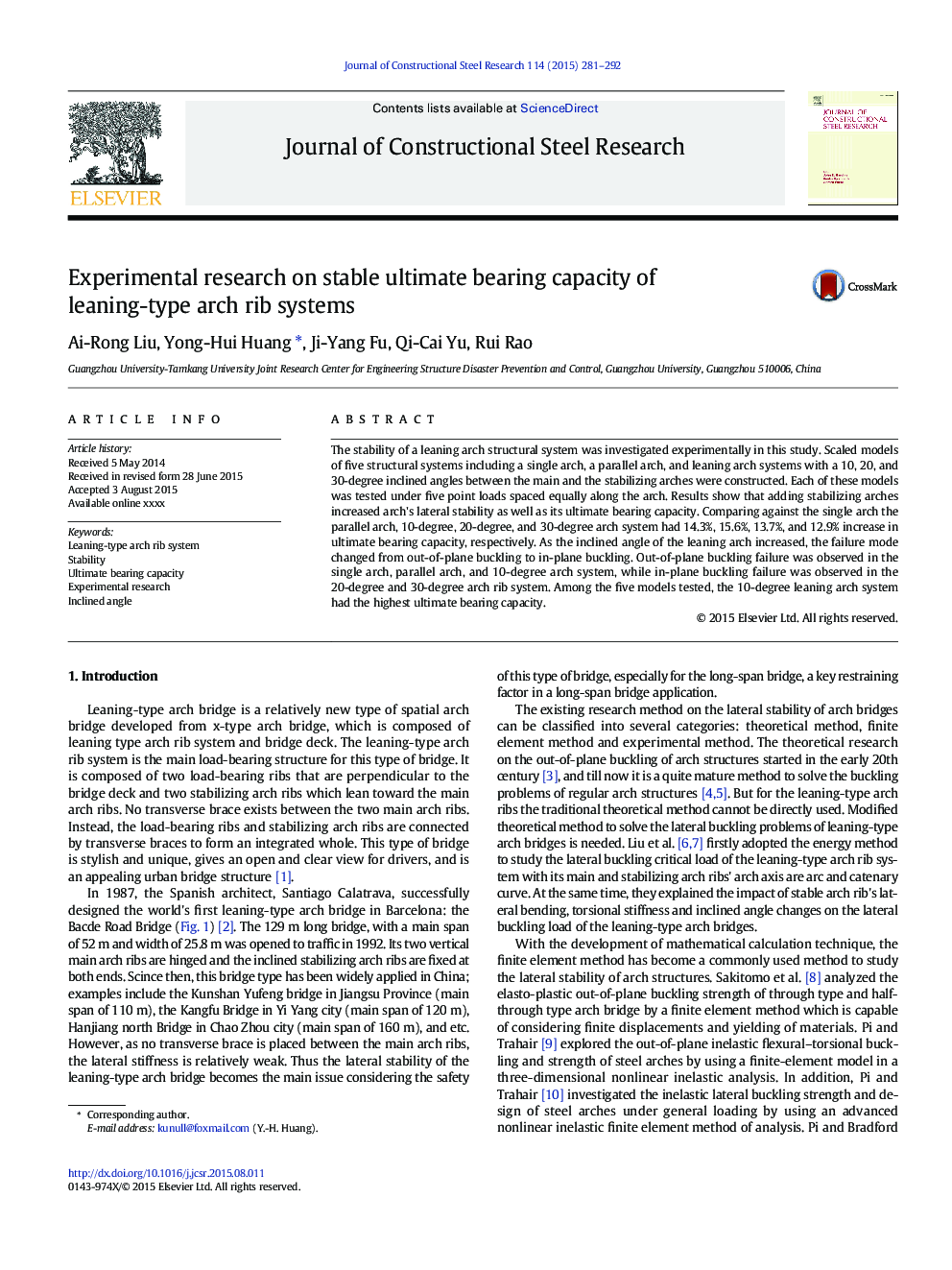| Article ID | Journal | Published Year | Pages | File Type |
|---|---|---|---|---|
| 6751740 | Journal of Constructional Steel Research | 2015 | 12 Pages |
Abstract
The stability of a leaning arch structural system was investigated experimentally in this study. Scaled models of five structural systems including a single arch, a parallel arch, and leaning arch systems with a 10, 20, and 30-degree inclined angles between the main and the stabilizing arches were constructed. Each of these models was tested under five point loads spaced equally along the arch. Results show that adding stabilizing arches increased arch's lateral stability as well as its ultimate bearing capacity. Comparing against the single arch the parallel arch, 10-degree, 20-degree, and 30-degree arch system had 14.3%, 15.6%, 13.7%, and 12.9% increase in ultimate bearing capacity, respectively. As the inclined angle of the leaning arch increased, the failure mode changed from out-of-plane buckling to in-plane buckling. Out-of-plane buckling failure was observed in the single arch, parallel arch, and 10-degree arch system, while in-plane buckling failure was observed in the 20-degree and 30-degree arch rib system. Among the five models tested, the 10-degree leaning arch system had the highest ultimate bearing capacity.
Related Topics
Physical Sciences and Engineering
Engineering
Civil and Structural Engineering
Authors
Ai-Rong Liu, Yong-Hui Huang, Ji-Yang Fu, Qi-Cai Yu, Rui Rao,
